So much great rock music, so many excellent films! Last week Film Obsessive brought you a list of Ten Fave Rock Films: Fiction, those films that presented invented narratives and (usually) characters to convey the spirit of rock and roll, going back all the way to rock’s start in the 1950s to the present day. Films like Quadrophenia, A Hard Day’s Night, School of Rock, and The Commitments present audiences with coming-of-age bildungsromans, madcap adventures, and great comedy to rock out to.
Since the 1960s, documentaries have also been intrinsic to the presentation of rock music on the big screen. These are the films that focus on real subjects, with cameras following the performers both behind the stage and on it, seeking not only to present them as performers but also as subjects. The very best rock docs do something more, though: they find in their subjects some deeper truth or meaning, working metaphorically to offer up greater insights about art, culture, and society.
This list of Ten Fave Rock Docs excludes films that are predominantly performance-based. Not that those can’t be great, too; I’m simply saving them—Stop Making Sense, The Last Waltz, etc.—for a subsequent article. These rock docs do more than just show performers in performance, and they do more than simply fanwank: every one of these documentaries manages to offer up not only some great music but also surprising, conflicting, or even confounding messages about the people who make it.
10. Dont Look Back
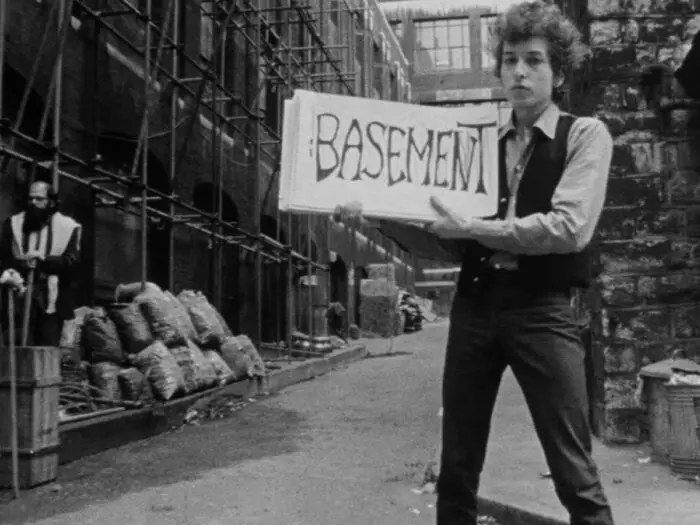
Here’s where it all started. Director D.A. Pennebaker trained as a photographer and honed his documentary chops with Drew and Associates on films like Primary—where a famous over-the-shoulder shot of Presidential candidate John F. Kennedy making his way to the dais would be modeled here with Bob Dylan and later mocked in This Is Spinal Tap. Pennebaker and his contemporaries the Maysles Brothers, in the wake of the French New Wave, established the tenets of American Direct Cinema, training the camera on the subject without traditional interviews or exposition. Bob Dylan was gearing up his renegade phase, trading in his acoustic guitar for an electric and favoring some Godard-like shades. Going, in short, rock and roll. Pennebaker’s approach and Dylan’s enigmatic charisma made for a perfect match, and the Rock Doc was born.
9. What Happened, Miss Simone?
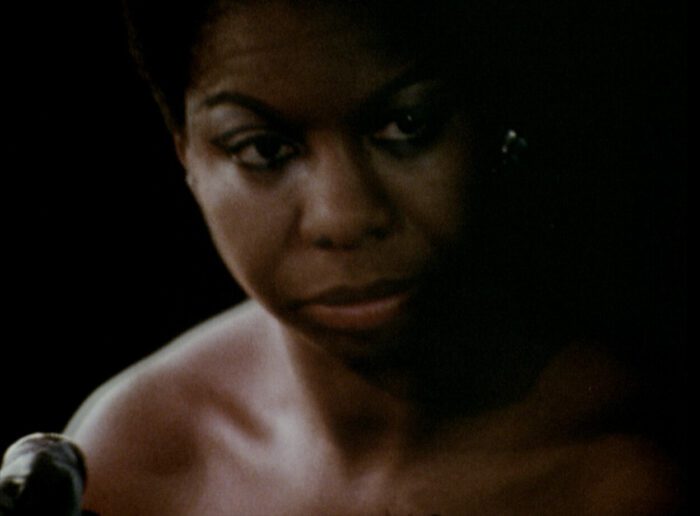
In its broadest strokes, What Happened, Miss Simone? might resemble the typical trajectory of a cliched Behind the Music episode. You know: artist rises from humble beginnings to achieve fame only to fall back to earth; years later, a valiant comeback pleases the fanbase and restores a legacy. Except Nina Simone never got her second act, and her complex, tragic story serves as a synecdoche for so, so much: the refusal to embrace a politically progressive artist, the rejection of a black woman for failing to adhere to cultural standards of beauty, even the willful ignorance of an artist’s obviously-jeopardized mental health. Director Liz Garbus, helping to lead a documentary renaissance Netflix had a lot to do with—it was the streaming service’s first original film—digs deep into Simone’s life and music, picking key moments from archival footage that tell the story, and while the film is full of the artist’s incredible music, it also never shies away from the controversies that followed the artist from her youth to her untimely death. Garbus and her team were in the editing room when Ferguson, Missouri, went up in arms over the death of Michael Brown and America’s racial conflicts were reignited anew: to watch What Happened, Miss Simone? is to watch a country’s history repeat itself in an apparently endless loop.
8. Madonna: Truth or Dare
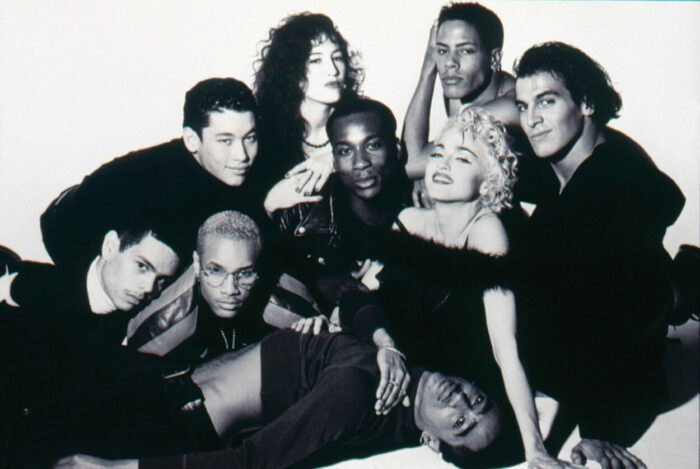
Madonna in 1991 was at the very apex of her fame and cultural influence. A back up gig on her tour was among the most sought-after in the business. The world’s most famous actors lined up as her prospective suitors. A film career looked promising. Hit after hit had the airwaves into the groove and MTV airing her provocative videos nonstop. The “Blond Ambition” tour was a massive success, selling out arenas across the U.S. and the world. In short, Madonna had everyone’s attention. And she used it in the documentary Madonna: Truth or Dare as her pulpit, advocating for her LGBT (before pluses and Qs were added) dancers and holding court like the prima donna (not “pre-Madonna”) that she was. Director Alek Keshishian was just 26 at the time of the film’s release but already had developed an uncanny eye and ear for catching little nuggets of gold, whether it’s an impromptu bedtop performance of “Like a Virgin,” Kevin Costner in a moment of gagworthy doofusness (or Warren Beatty as a disapproving schoolmarm), or a fellatio demo with a bottle of Vichy water. Madonna aimed to shock—and did—but she was never any more entertaining and provocative than here in Madonna: Truth or Dare.
7. Nothing Compares

When I reviewed Nothing Compares for Film Obsessive upon its release last fall, I was struck most immediately by two things. First, that so many female (and/or trans) artists can today express themselves in so many ways that a singer like Sinéad O’Connor (or before her, a Nina Simone) could not: Billie Eilish and others today owe her a debt. And second, that it was to director Kathryn Ferguson’s credit that she made the film while its subject was—unlike other good docs about, say, Glen Campbell, Linda Ronstadt, or David Bowie—still active and performing, rather than disabled or passed away. Sadly, O’Connor died recently, reminding the world once again of the moment when she stood up against the abuses of the Catholic Church on national television—and paid a heavy price for doing so. Ferguson’s excellent documentary reminded us not only that she was right in the first place, but that the Irish singer was far more than a one-hit wonder but a varied, complex, haunted, and supremely talented artist we should have been listening to all along. I hope in the wake of O’Connor’s untimely passing that at the very least more find their way to her extraordinary catalog of excellent music and to this fine, fine documentary.
6. Moonage Daydream

With his prior documentaries The Kid Stays in the Picture and Kurt Cobain: Montage of Heck, director Brett Morgen proved he was not all all shy to experiment and innovate. For The Kid he cribbed narration from famed producer Robert Evans’ upcoming audiobook of the same name and set vintage photographs to motion with Adobe After Effects in a way no one had before; for Montage he assembled Cobain’s home movies, recordings, drawings, photography, and journals into an idiosyncratic journey through the singer’s pain and music. Both prepared him to take on an even more complex figure in David Bowie, and in Moonage Daydream Morgen barely even bothers with exposition, creating from the art of the 20th century a visual artscape for the enigmatic artist to sing, prance, and opine his way through. It’s not, as I noted in my original review, a film for the folks whose only Bowie playlist or CD is a greatest hits package, but a deep and risky dive through lesser-known cuts and tours. In a bit of movie magic, Morgen weaves a mystical narrative with the singer’s “Sound and Vision” to bring him, for a brief time as Moonage Daydream concludes, back to life on earth once again.
5. Anvil! The Story of Anvil

It’s almost as if This Is Spinal Tap were a nonfiction film. A heavy metal band led by the duo of Steve “Lips” Kudlow and Robb Reiner, Anvil seemed ready for stardom back when they co-headlined Japan’s Super Rock festival in 1984 with Scorpions, Whitesnake, and Bon Jovi. But the fame those acts earned eluded Anvil, and the dynamic duo is left to a life of construction and catering gigs. When their big comeback chance arrives in the form of a European Tour organized by a fan eager to see them earn the respect he feels they deserve, it’s as if the scenario were drafted by Rob (with one “B”) Reiner and Christopher Guest: the band can’t manage European travel, missing connections, getting lost, struggling with language, scuffling with bar owners until they are penniless, and eventually sleeping on a train station floor. Robb-with-two-Bs Reiner takes his George Harrison stand and announces he’s quitting the band, only to be persuaded, like Harrison was, by his mates to stick it out: when Anvil makes it to the final concert of the tour, the “Monsters of Transylvania” set up in a 10,000 seat arena, the band plays to a “crowd” of less than 200 people. From there, things get worse before they get marginally better in this almost too-painful-to-be-true-but-it-is documentary of a band never destined for the big time.
4. Gimme Shelter
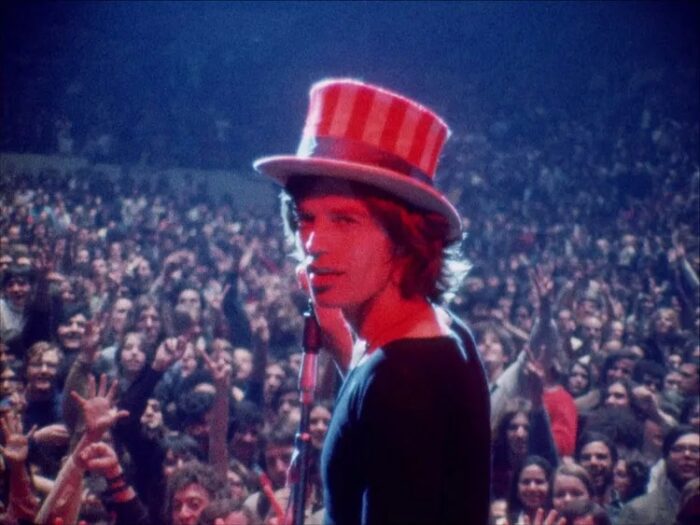
If in Dont Look Back D. A. Pennebaker first wed the developing, distinctive style that came to be known as American Direct Cinema with rock and roll as its subject, in 1970 the Maysles brothers Albert and David with their co-director and editor Charlotte Zwerin took the new marriage to the height of its accomplishment. The filmmakers followed the Rolling Stones on their ill-fated 1969 U.S. tour. Mick Jagger, Keith Richard, and the band would make for a fascinating behind-the-scenes rock doc under any circumstances, but when the tour took them to San Francisco’s Altamont Speedway, there the communal celebrations of the Love Generation, some 300,000 in number, were shocked by the very violence the Stones sang of, as the Hell’s Angels, hired at the peak of hubris to perform security duties, stabbed a man to death. Meredith Hunter was not the only concert casualty: two died in a hit-and-run car accident and another by LSD-induced drowning, not to mention scores of injuries, fights, and thefts. Ready with their cameras and unafraid of the big questions the weekend’s violence posed, the Maysles and Zwerin were there to chart one of the key moments the dreams of rock and roll died forever, in a pool of blood near its stage.
3. 20 Feet From Stardom

The Rolling Stones and their brutal classic “Gimme Shelter” figure also in Morgan Neville’s 2013 study of those who twist, toil, and harmonize “twenty feet from stardom”: the backup singers who anonymously lend depth and texture to the star’s lead performance. So often the dynamics of racial imbalance come into play, as is the case with “Gimme Shelter,” a song inspired by and linked to jealousy, violence, rape, and murder. While Keith Richard’s shimmery guitar and Mick Jagger’s sinewy vocals kick off the track, it’s Merry Clayton—woken in the middle of the night, pregnant, hair in curlers—whose piercing shrieks of “Rape! Murder! It’s just a shot away!” make the track the incendiary classic it is. Isolate her vocals, as Neville does, and the impact is undeniable. But more than just a puff profile of the people you don’t know, 20 Feet from Stardom tells the story of cultural appropriation and the economics of labor exploitation that is all too endemic to the industry. You’ll never listen to “Gimme Shelter”—or for that matter, “Young Americans” or dozens of other rock classics—the same way again.
2. The Beatles: Get Back
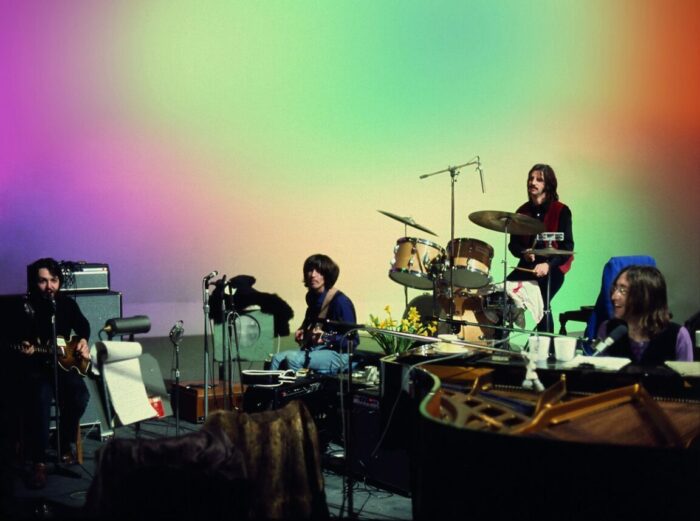
Okay, I might be cheating a bit with this entry. The Beatles: Get Back is, I suppose, technically a docuseries, better suited to coverage on our sister site TV Obsessive—and where I gave the film (see what I did there) both a glowing review and later a closer inspection of its editing. Well, a portion of this mammoth project earned a theatrical release when The Beatles: Get Back–The Rooftop Concert screened in IMAX theatres across numerous US cities in January, 2022. So there. But in the history of rock documentaries I would be remiss not to mention such an extraordinary project anyway. Following his work restoring video footage and recorded audio into the magnificent WWI documentary They Shall Not Grow Old, Peter Jackson performed a similar magic trick with the trove of material Michael Lindsay-Hogg shot for the Beatles’ “Get Back” project, decades ago released unceremoniously as Let It Be. Jackson and his team scrubbed the footage, reassembled it, concocted a ten-minute expository primer for tyros, and brought the Beatles back to life in this three-part, eight-hour series. No longer was January 1969 just a dull exercise in acrimony as most had thought: it became a more joyful, challenging, complex, and even ultimately rewarding and satisfying musical adventure. Culminating with the famous rooftop concert in its entirety, Jackson’s Get Back proved to be the greatest work of restoration and reclamation the rock-doc genre has ever seen.
1. Searching for Sugar Man

So common is the trope of the fallen artist in the rock-doc genre that true-life films with a different story than that to tell make for great pleasures. No film does this better than Searching for Sugar Man, which borrows for much of its runtime from the true-crime investigative procedural instead. In 1970 a little-known artist became for a time the most famous in all of South Africa, despite his records being censored—the vinyl, sliced, even, with a knife to render it unplayable—the best-selling artist of the era. Known only, mysteriously, as “Rodriguez,” his records Cold Fact and Coming to Reality outsold the Rolling Stones and Beatles, even though no one, it appeared, knew a damn thing about him. Sure, there were rumors: he’d self-immolated during a concert, some said; others that at the end of a disappointing gig he’d pulled out a gun and shot himself. Here, writer-director Malik Bendjelloul focuses his film on the work of two of the singer’s South African fans to learn who Rodriguez was and what actually became of him. They find out—not to disclose spoilers—that the Detroit singer named Sixto Rodriguez is alive, if living in destitution, but content with his handyman work and loving family, and ready, surprisingly, to travel to South Africa for a series of sold-out concerts heralding his “discovery” nearly 40 years after the fact. The “Search for Sugar Man” does more than just find its target, though: it brings together fans and families in the celebration of extraordinary music.
Sixto Rodriguez passed away last week at age 81. Now go listen to his amazing, heartfelt, tuneful, timely, timeless music.
Honorable Mention: Miss Americana (Taylor Swift), The Sparks Brothers, and Amy (Winehouse) are all excellent studies of the artists. Alone Together. is a lovefest of a lockdown doc from Charli XCX.
Don’t bother: Too many to mention, in the mold of VH1 Behind the Music episodes. You’ll get more out of “Gentle and Soft: The Story of the Blue Jean Committee,” Documentary Now‘s brilliant treatment of The History of the Eagles, than you will out of the actual documentary it’s based on.
Stay tuned for the third installment in this series of Film Obsessive’s Fave Rock Films, this one to take a look at biopics, a genre that has engendered dozens of great performances and significantly fewer great films.



